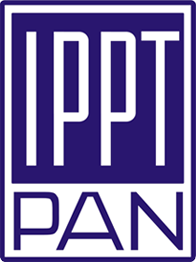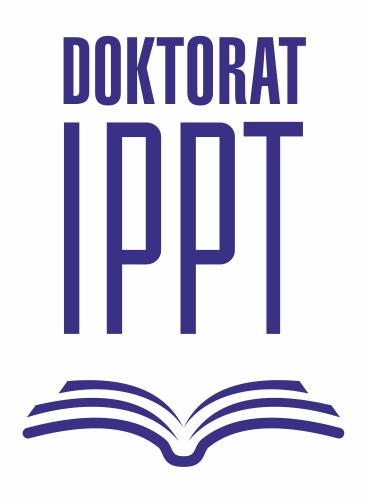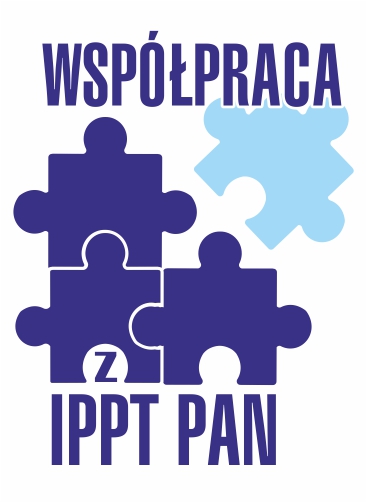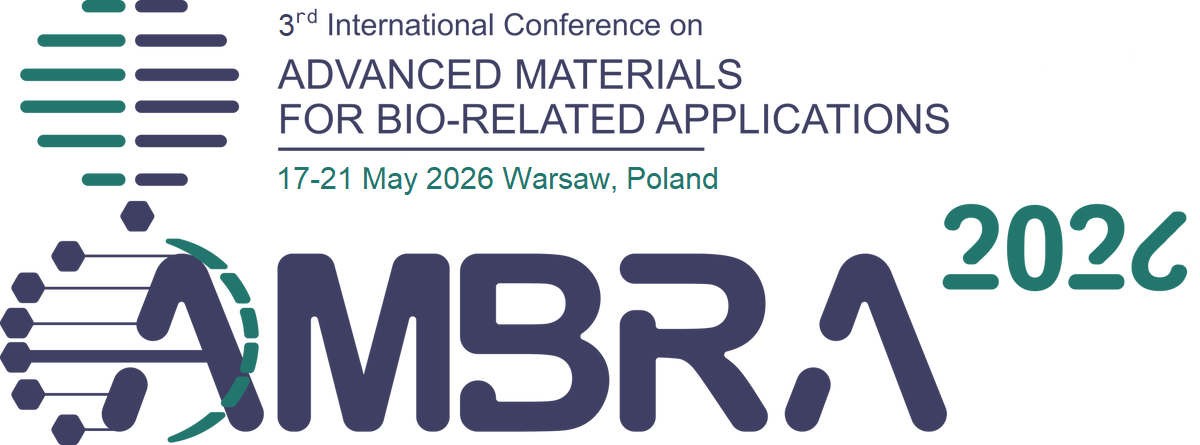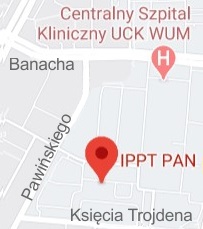| 1. |
Feltham L.♦, Moran J.♦, Goldrick M.♦, Lord E.♦, Spiller D. G.♦, Cavet J. S.♦, Muldoon M.♦, Roberts I. S.♦, Paszek P., Bacterial aggregation facilitates internalin-mediated invasion of Listeria monocytogenes,
Frontiers in Cellular and Infection Microbiology, ISSN: 2235-2988, DOI: 10.3389/fcimb.2024.1411124, Vol.14, pp.1411124-01-18, 2024 Streszczenie:
Dissemination of food-borne L. monocytogenes in the host relies on internalin-mediated invasion, but the underlying invasion strategies remain elusive. Here we use live-cell microscopy to follow single cell interactions between individual human cells and L. monocytogenes and elucidate mechanisms associated with internalin B (InlB)-mediated invasion. We demonstrate that whilst a replicative invasion of nonphagocytic cells is a rare event even at high multiplicities of invasion, L. monocytogenes overcomes this by utilising a strategy relaying on PrfA-mediated ActA-based aggregation. We show that L. monocytogenes forms aggregates in extracellular host cell environment, which promote approximately 5-fold more host cell adhesions than the non-aggregating actA-ΔC mutant (which lacks the C-terminus coding region), with the adhering bacteria inducing 3-fold more intracellular invasions. Aggregation is associated with robust MET tyrosine kinase receptor clustering in the host cells, a hallmark of InlB-mediated invasion, something not observed with the actA-ΔC mutant. Finally, we show via RNA-seq analyses that aggregation involves a global adaptive response to host cell environment (including iron depletion), resulting in metabolic changes in L. monocytogenes and upregulation of the PrfA virulence regulon. Overall, our analyses provide new mechanistic insights into internalin-mediated host-pathogen interactions of L. monocytogenes. Słowa kluczowe:
Listeria monocytogenes, host-pathogen interactions, aggregation, PrfA regulon, livecell microscopy Afiliacje autorów:
| Feltham L. | - | inna afiliacja | | Moran J. | - | inna afiliacja | | Goldrick M. | - | inna afiliacja | | Lord E. | - | inna afiliacja | | Spiller D. G. | - | inna afiliacja | | Cavet J. S. | - | inna afiliacja | | Muldoon M. | - | inna afiliacja | | Roberts I. S. | - | inna afiliacja | | Paszek P. | - | IPPT PAN |
| 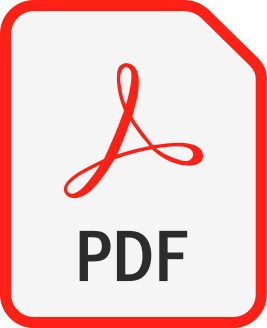 | 100p. |
| 2. |
Moran J.♦, Feltham L.♦, Bagnall J.♦, Goldrick M.♦, Lord E.♦, Nettleton C.♦, Spiller David G.♦, Roberts I.♦, Paszek P., Live-cell imaging reveals single-cell and population-level infection strategies of Listeria monocytogenes in macrophages,
Frontiers in Immunology, ISSN: 1664-3224, DOI: 10.3389/fimmu.2023.1235675, Vol.14, pp.1235675-1-17, 2023 Streszczenie:
Pathogens have developed intricate strategies to overcome the host’s innate immune responses. In this paper we use live-cell microscopy with a single bacterium resolution to follow in real time interactions between the food-borne pathogen L. monocytogenes and host macrophages, a key event controlling the infection in vivo. We demonstrate that infection results in heterogeneous outcomes, with only a subset of bacteria able to establish a replicative invasion of macrophages. The fate of individual bacteria in the same host cell was independent from the host cell and non-cooperative, being independent from co-infecting bacteria. A higher multiplicity of infection resulted in a reduced probability of replication of the overall bacterial population. By use of internalisation assays and conditional probabilities to mathematically describe the two-stage invasion process, we demonstrate that the higher MOI compromises the ability of macrophages to phagocytose bacteria. We found that the rate of phagocytosis is mediated via the secreted Listeriolysin toxin (LLO), while the probability of replication of intracellular bacteria remained constant. Using strains expressing fluorescent reporters to follow transcription of either the LLO-encoding hly or actA genes, we show that replicative bacteria exhibited higher PrfA regulon expression in comparison to those bacteria that did not replicate, however elevated PrfA expression per se was not sufficient to increase the probability of replication. Overall, this demonstrates a new role for the population-level, but not single cell, PrfA-mediated activity to regulate outcomes of host pathogen interactions. Słowa kluczowe:
Listeria monocytogenes, macrophage, single cell heterogeneity, phagocytosis, PrfA regulon, listeriolysin Afiliacje autorów:
| Moran J. | - | inna afiliacja | | Feltham L. | - | inna afiliacja | | Bagnall J. | - | inna afiliacja | | Goldrick M. | - | inna afiliacja | | Lord E. | - | inna afiliacja | | Nettleton C. | - | inna afiliacja | | Spiller David G. | - | inna afiliacja | | Roberts I. | - | inna afiliacja | | Paszek P. | - | IPPT PAN |
|  | 140p. |
| 3. |
Downton P.♦, Bagnall James S.♦, England H.♦, Spiller David G.♦, Humphreys Neil E.♦, Jackson Dean A.♦, Paszek P., White Michael R.R.♦, Adamson Antony D.♦, Overexpression of IκB⍺ modulates NF-κB activation of inflammatory target gene expression,
Frontiers in Molecular Biosciences, ISSN: 2296-889X, DOI: 10.3389/fmolb.2023.1187187, Vol.10, pp.1187187-1-15, 2023 Streszczenie:
Cells respond to inflammatory stimuli such as cytokines by activation of the nuclear factor-κB (NF-κB) signalling pathway, resulting in oscillatory translocation of the transcription factor p65 between nucleus and cytoplasm in some cell types. We investigate the relationship between p65 and inhibitor-κB⍺ (IκBα) protein levels and dynamic properties of the system, and how this interaction impacts on the expression of key inflammatory genes. Using bacterial artificial chromosomes, we developed new cell models of IκB⍺-eGFP protein overexpression in a pseudo-native genomic context. We find that cells with high levels of the negative regulator IκBα remain responsive to inflammatory stimuli and maintain dynamics for both p65 and IκBα. In contrast, canonical target gene expression is dramatically reduced by overexpression of IκBα, but can be partially rescued by overexpression of p65. Treatment with leptomycin B to promote nuclear accumulation of IκB⍺ also suppresses canonical target gene expression, suggesting a mechanism in which nuclear IκB⍺ accumulation prevents productive p65 interaction with promoter binding sites. This causes reduced target promoter binding and gene transcription, which we validate by chromatin immunoprecipitation and in primary cells. Overall, we show how inflammatory gene transcription is modulated by the expression levels of both IκB⍺ and p65. This results in an anti-inflammatory effect on transcription, demonstrating a broad mechanism to modulate the strength of inflammatory response. Słowa kluczowe:
NF-κB, inflammation, IκB⍺, overexpression, gene expression, localisation Afiliacje autorów:
| Downton P. | - | inna afiliacja | | Bagnall James S. | - | inna afiliacja | | England H. | - | inna afiliacja | | Spiller David G. | - | inna afiliacja | | Humphreys Neil E. | - | inna afiliacja | | Jackson Dean A. | - | inna afiliacja | | Paszek P. | - | IPPT PAN | | White Michael R.R. | - | University of Manchester (GB) | | Adamson Antony D. | - | inna afiliacja |
|  | 140p. |
| 4. |
Kalliara E.♦, Kardynska M.♦, Bagnall J.♦, Spiller David G.♦, Müller W.♦, Ruckerl D.♦, Śmieja J.♦, Biswas Subhra K.♦, Paszek P., Post-transcriptional regulatory feedback encodes JAK-STAT signal memory of interferon stimulation,
Frontiers in Immunology, ISSN: 1664-3224, DOI: 10.3389/fimmu.2022.947213, Vol.13, pp.947213-1-19, 2022 Streszczenie:
Immune cells fine tune their responses to infection and inflammatory cues. Here, using live-cell confocal microscopy and mathematical modelling, we investigate interferon-induced JAK-STAT signalling in innate immune macrophages. We demonstrate that transient exposure to IFN-γ stimulation induces a long-term desensitisation of STAT1 signalling and gene expression responses, revealing a dose- and time-dependent regulatory feedback that controls JAK-STAT responses upon re-exposure to stimulus. We show that IFN-α/β1 elicit different level of desensitisation from IFN-γ, where cells refractory to IFN-α/β1 are sensitive to IFN-γ, but not vice versa. We experimentally demonstrate that the underlying feedback mechanism involves regulation of STAT1 phosphorylation but is independent of new mRNA synthesis and cognate receptor expression. A new feedback model of the protein tyrosine phosphatase activity recapitulates experimental data and demonstrates JAK-STAT network’s ability to decode relative changes of dose, timing, and type of temporal interferon stimulation. These findings reveal that STAT desensitisation renders cells with signalling memory of type I and II interferon stimulation, which in the future may improve administration of interferon therapy. Słowa kluczowe:
JAK-STAT network, STAT1 kinetics, interferons, pathway desensitisation, mathematical modelling, signal memory, live-cell microscopy Afiliacje autorów:
| Kalliara E. | - | inna afiliacja | | Kardynska M. | - | inna afiliacja | | Bagnall J. | - | inna afiliacja | | Spiller David G. | - | inna afiliacja | | Müller W. | - | inna afiliacja | | Ruckerl D. | - | inna afiliacja | | Śmieja J. | - | Silesian University of Technology (PL) | | Biswas Subhra K. | - | inna afiliacja | | Paszek P. | - | IPPT PAN |
| 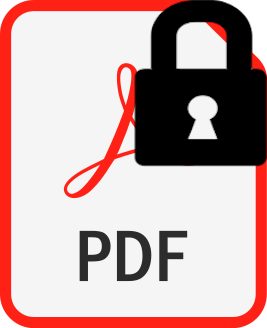 | 140p. |
| 5. |
Paszek A.♦, Kardyńska M.♦, Bagnall J.♦, Śmieja J.♦, Spiller David G.♦, Widłak P.♦, Kimmel M.♦, Wiesława W.♦, Paszek P., Heat shock response regulates stimulus-specificity and sensitivity of the pro-inflammatory NF-κB signalling,
Cell Communication and Signaling, ISSN: 1478-811X, DOI: 10.1186/s12964-020-00583-0, Vol.18, pp.77-1-21, 2020 Streszczenie:
Background
Ability to adapt to temperature changes trough the Heat Shock Response (HSR) pathways is one of the most fundamental and clinically relevant cellular response systems. Heat Shock (HS) affects the signalling and gene expression responses of the Nuclear Factor κB (NF-κB) transcription factor, a critical regulator of proliferation and inflammation, however, our quantitative understanding of how cells sense and adapt to temperature changes is limited.
Methods
We used live-cell time-lapse microscopy and mathematical modelling to understand the signalling of the NF-κB system in the human MCF7 breast adenocarcinoma cells in response to pro-inflammatory Interleukin 1β (IL1β) and Tumour Necrosis Factor α (TNFα) cytokines, following exposure to a 37–43 °C range of physiological and clinical temperatures.
Results
We show that exposure to 43 °C 1 h HS inhibits the immediate NF-κB signalling response to TNFα and IL1β stimulation although uptake of cytokines is not impaired. Within 4 h after HS treatment IL1β-induced NF-κB responses return to normal levels, but the recovery of the TNFα-induced responses is still affected. Using siRNA knock-down of Heat Shock Factor 1 (HSF1) we show that this stimulus-specificity is conferred via the Inhibitory κB kinase (IKK) signalosome where HSF1-dependent feedback regulates TNFα, but not IL1β-mediated IKK recovery post HS. Furthermore, we demonstrate that through the temperature-dependent denaturation and recovery of IKK, TNFα and IL1β-mediated signalling exhibit different temperature sensitivity and adaptation to repeated HS when exposed to a 37–43 °C temperature range. Specifically, IL1β-mediated NF-κB responses are more robust to temperature changes in comparison to those induced by TNFα treatment. Afiliacje autorów:
| Paszek A. | - | inna afiliacja | | Kardyńska M. | - | inna afiliacja | | Bagnall J. | - | inna afiliacja | | Śmieja J. | - | Silesian University of Technology (PL) | | Spiller David G. | - | inna afiliacja | | Widłak P. | - | inna afiliacja | | Kimmel M. | - | Rice University (US) | | Wiesława W. | - | inna afiliacja | | Paszek P. | - | IPPT PAN |
|  |
| 6. |
Papoutsopoulou S.♦, Burkitt Michael D.♦, Bergey F.♦, England H.♦, Hough R.♦, Schmidt L.♦, Spiller David G.♦, White Michael H. R.R.♦, Paszek P.♦, Jackson Dean A.♦, Martins Dos Santos Vitor A. P.♦, Sellge G.♦, Pritchard D. M.♦, Campbell Barry J.♦, Müller W.♦, Probert Chris S.♦, Macrophage-Specific NF-κB Activation Dynamics Can Segregate Inflammatory Bowel Disease Patients,
Frontiers in Immunology, ISSN: 1664-3224, DOI: 10.3389/fimmu.2019.02168, Vol.10, pp.2168-1-11, 2019 Streszczenie:
The heterogeneous nature of inflammatory bowel disease (IBD) presents challenges, particularly when choosing therapy. Activation of the NF-κB transcription factor is a highly regulated, dynamic event in IBD pathogenesis. Using a lentivirus approach, NF-κB-regulated luciferase was expressed in patient macrophages, isolated from frozen peripheral blood mononuclear cell samples. Following activation, samples could be segregated into three clusters based on the NF-κB-regulated luciferase response. The ulcerative colitis (UC) samples appeared only in the hypo-responsive Cluster 1, and in Cluster 2. Conversely, Crohn's disease (CD) patients appeared in all Clusters with their percentage being higher in the hyper-responsive Cluster 3. A positive correlation was seen between NF-κB-induced luciferase activity and the concentrations of cytokines released into medium from stimulated macrophages, but not with serum or biopsy cytokine levels. Confocal imaging of lentivirally-expressed p65 activation revealed that a higher proportion of macrophages from CD patients responded to endotoxin lipid A compared to controls. In contrast, cells from UC patients exhibited a shorter duration of NF-κB p65 subunit nuclear localization compared to healthy controls, and CD donors. Analysis of macrophage cytokine responses and patient metadata revealed a strong correlation between CD patients who smoked and hyper-activation of p65. These in vitro dynamic assays of NF-κB activation in blood-derived macrophages have the potential to segregate IBD patients into groups with different phenotypes and may therefore help determine response to therapy. Słowa kluczowe:
inflammatory bowel disease, NF-kB, macrophages, cytokines, Crohn’s disease, ulcerative colitis Afiliacje autorów:
| Papoutsopoulou S. | - | inna afiliacja | | Burkitt Michael D. | - | inna afiliacja | | Bergey F. | - | inna afiliacja | | England H. | - | inna afiliacja | | Hough R. | - | inna afiliacja | | Schmidt L. | - | inna afiliacja | | Spiller David G. | - | inna afiliacja | | White Michael H. R.R. | - | University of Manchester (GB) | | Paszek P. | - | inna afiliacja | | Jackson Dean A. | - | inna afiliacja | | Martins Dos Santos Vitor A. P. | - | inna afiliacja | | Sellge G. | - | inna afiliacja | | Pritchard D. M. | - | inna afiliacja | | Campbell Barry J. | - | inna afiliacja | | Müller W. | - | inna afiliacja | | Probert Chris S. | - | inna afiliacja |
|  |
| 7. |
Kardyńska M.♦, Paszek A.♦, Śmieja J.♦, Spiller David G.♦, Widłak W.♦, White Michael R. H.R.♦, Paszek P.♦, Kimmel M.♦, Quantitative analysis reveals crosstalk mechanisms of heat shock-induced attenuation of NF-κB signaling at the single cell level,
PLOS COMPUTATIONAL BIOLOGY, ISSN: 1553-7358, DOI: 10.1371/journal.pcbi.1006130, Vol.14, No.4, pp.e1006130-1-25, 2018 Streszczenie:
Elevated temperature induces the heat shock (HS) response, which modulates cell proliferation, apoptosis, the immune and inflammatory responses. However, specific mechanisms linking the HS response pathways to major cellular signaling systems are not fully understood. Here we used integrated computational and experimental approaches to quantitatively analyze the crosstalk mechanisms between the HS-response and a master regulator of inflammation, cell proliferation, and apoptosis the Nuclear Factor κB (NF-κB) system. We found that populations of human osteosarcoma cells, exposed to a clinically relevant 43°C HS had an attenuated NF-κB p65 response to Tumor Necrosis Factor α (TNFα) treatment. The degree of inhibition of the NF-κB response depended on the HS exposure time. Mathematical modeling of single cells indicated that individual crosstalk mechanisms differentially encode HS-mediated NF-κB responses while being consistent with the observed population-level responses. In particular “all-or-nothing” encoding mechanisms were involved in the HS-dependent regulation of the IKK activity and IκBα phosphorylation, while others involving transport were “analogue”. In order to discriminate between these mechanisms, we used live-cell imaging of nuclear translocations of the NF-κB p65 subunit. The single cell responses exhibited “all-or-nothing” encoding. While most cells did not respond to TNFα stimulation after a 60 min HS, 27% showed responses similar to those not receiving HS. We further demonstrated experimentally and theoretically that the predicted inhibition of IKK activity was consistent with the observed HS-dependent depletion of the IKKα and IKKβ subunits in whole cell lysates. However, a combination of “all-or-nothing” crosstalk mechanisms was required to completely recapitulate the single cell data. We postulate therefore that the heterogeneity of the single cell responses might be explained by the cell-intrinsic variability of HS-modulated IKK signaling. In summary, we show that high temperature modulates NF-κB responses in single cells in a complex and unintuitive manner, which needs to be considered in hyperthermia-based treatment strategies. Afiliacje autorów:
| Kardyńska M. | - | inna afiliacja | | Paszek A. | - | inna afiliacja | | Śmieja J. | - | Silesian University of Technology (PL) | | Spiller David G. | - | inna afiliacja | | Widłak W. | - | inna afiliacja | | White Michael R. H.R. | - | University of Manchester (GB) | | Paszek P. | - | inna afiliacja | | Kimmel M. | - | Rice University (US) |
|  | 45p. |
| 8. |
Bagnall J.♦, Boddington C.♦, England H.♦, Brignall R.♦, Downton P.♦, Alsoufi Z.♦, Boyd J.♦, Rowe W.♦, Bennett A.♦, Walker C.♦, Adamson A.♦, Patel Nisha M. X.♦, O’Cualain R.♦, Schmidt L.♦, Spiller David G.♦, Jackson Dean A.♦, Müller W.♦, Muldoon M.♦, White Michael R. H.R.♦, Paszek P.♦, Quantitative analysis of competitive cytokine signaling predicts tissue thresholds for the propagation of macrophage activation,
Science Signaling, ISSN: 1945-0877, DOI: 10.1126/scisignal.aaf3998, Vol.11, No.540, pp.1-15, 2018 Streszczenie:
Toll-like receptor (TLR) signaling regulates macrophage activation and effector cytokine propagation in the constrained environment of a tissue. In macrophage populations, TLR4 stimulates the dose-dependent transcription of nuclear factor κB (NF-κB) target genes. However, using single-RNA counting, we found that individual cells exhibited a wide range (three orders of magnitude) of expression of the gene encoding the proinflammatory cytokine tumor necrosis factor–α (TNF-α). The TLR4-induced TNFA transcriptional response correlated with the extent of NF-κB signaling in the cells and their size. We compared the rates of TNF-α production and uptake in macrophages and mouse embryonic fibroblasts and generated a mathematical model to explore the heterogeneity in the response of macrophages to TLR4 stimulation and the propagation of the TNF-α signal in the tissue. The model predicts that the local propagation of the TLR4-dependent TNF-α response and cellular NF-κB signaling are limited to small distances of a few cell diameters between neighboring tissue-resident macrophages. In our predictive model, TNF-α propagation was constrained by competitive uptake of TNF-α from the environment, rather than by heterogeneous production of the cytokine. We propose that the highly constrained architecture of tissues enables effective localized propagation of inflammatory cues while avoiding out-of-context responses at longer distances. Afiliacje autorów:
| Bagnall J. | - | inna afiliacja | | Boddington C. | - | inna afiliacja | | England H. | - | inna afiliacja | | Brignall R. | - | inna afiliacja | | Downton P. | - | inna afiliacja | | Alsoufi Z. | - | inna afiliacja | | Boyd J. | - | inna afiliacja | | Rowe W. | - | inna afiliacja | | Bennett A. | - | inna afiliacja | | Walker C. | - | inna afiliacja | | Adamson A. | - | inna afiliacja | | Patel Nisha M. X. | - | inna afiliacja | | O’Cualain R. | - | inna afiliacja | | Schmidt L. | - | inna afiliacja | | Spiller David G. | - | inna afiliacja | | Jackson Dean A. | - | inna afiliacja | | Müller W. | - | inna afiliacja | | Muldoon M. | - | inna afiliacja | | White Michael R. H.R. | - | University of Manchester (GB) | | Paszek P. | - | inna afiliacja |
|  | 40p. |
| 9. |
Adamson A.♦, Boddington C.♦, Downton P.♦, Rowe W.♦, Bagnall J.♦, Lam C.♦, Maya-Mendoza A.♦, Schmidt L.♦, Harper Claire V.V.♦, Spiller David G.♦, Rand David A.A.♦, Jackson Dean A.♦, White Michael R. H.R.♦, Paszek P.♦, Signal transduction controls heterogeneous NF-κB dynamics and target gene expression through cytokine-specific refractory states,
Nature Communications, ISSN: 2041-1723, DOI: 10.1038/ncomms12057, Vol.7, pp.12057-1-14, 2016 Streszczenie:
Cells respond dynamically to pulsatile cytokine stimulation. Here we report that single, or well-spaced pulses of TNFα (>100 min apart) give a high probability of NF-κB activation. However, fewer cells respond to shorter pulse intervals (<100 min) suggesting a heterogeneous refractory state. This refractory state is established in the signal transduction network downstream of TNFR and upstream of IKK, and depends on the level of the NF-κB system negative feedback protein A20. If a second pulse within the refractory phase is IL-1β instead of TNFα, all of the cells respond. This suggests a mechanism by which two cytokines can synergistically activate an inflammatory response. Gene expression analyses show strong correlation between the cellular dynamic response and NF-κB-dependent target gene activation. These data suggest that refractory states in the NF-κB system constitute an inherent design motif of the inflammatory response and we suggest that this may avoid harmful homogenous cellular activation. Afiliacje autorów:
| Adamson A. | - | inna afiliacja | | Boddington C. | - | inna afiliacja | | Downton P. | - | inna afiliacja | | Rowe W. | - | inna afiliacja | | Bagnall J. | - | inna afiliacja | | Lam C. | - | inna afiliacja | | Maya-Mendoza A. | - | inna afiliacja | | Schmidt L. | - | inna afiliacja | | Harper Claire V.V. | - | University of Manchester (GB) | | Spiller David G. | - | inna afiliacja | | Rand David A.A. | - | University of Warwick (GB) | | Jackson Dean A. | - | inna afiliacja | | White Michael R. H.R. | - | University of Manchester (GB) | | Paszek P. | - | inna afiliacja |
|  | 45p. |
| 10. |
Phillips N.♦, Manning C.♦, Pettini T.♦, Veronica B.♦, Elli M.♦, Stanley P.♦, Boyd J.♦, Bagnall J.♦, Paszek P., Spiller David G.♦, White M.♦, Goodfellow M.♦, Tobias G.♦, Magnus R.♦, Nancy P.♦, Stochasticity in the miR-9/Hes1 oscillatory network can account for clonal heterogeneity in the timing of differentiation,
eLife, ISSN: 2050-084X, DOI: 10.7554/eLife.16118, Vol.5, pp.e16118-1-33, 2016 Streszczenie:
Recent studies suggest that cells make stochastic choices with respect to differentiation or division. However, the molecular mechanism underlying such stochasticity is unknown. We previously proposed that the timing of vertebrate neuronal differentiation is regulated by molecular oscillations of a transcriptional repressor, HES1, tuned by a post-transcriptional repressor, miR-9. Here, we computationally model the effects of intrinsic noise on the Hes1/miR-9 oscillator as a consequence of low molecular numbers of interacting species, determined experimentally. We report that increased stochasticity spreads the timing of differentiation in a population, such that initially equivalent cells differentiate over a period of time. Surprisingly, inherent stochasticity also increases the robustness of the progenitor state and lessens the impact of unequal, random distribution of molecules at cell division on the temporal spread of differentiation at the population level. This advantageous use of biological noise contrasts with the view that noise needs to be counteracted. Afiliacje autorów:
| Phillips N. | - | inna afiliacja | | Manning C. | - | inna afiliacja | | Pettini T. | - | inna afiliacja | | Veronica B. | - | inna afiliacja | | Elli M. | - | inna afiliacja | | Stanley P. | - | inna afiliacja | | Boyd J. | - | inna afiliacja | | Bagnall J. | - | inna afiliacja | | Paszek P. | - | IPPT PAN | | Spiller David G. | - | inna afiliacja | | White M. | - | inna afiliacja | | Goodfellow M. | - | inna afiliacja | | Tobias G. | - | inna afiliacja | | Magnus R. | - | inna afiliacja | | Nancy P. | - | inna afiliacja |
|  |
| 11. |
Martín-Sánchez F.♦, Diamond C.♦, Zeitler M.♦, Gomez A.♦, Baroja-Mazo A.♦, Bagnall J.♦, Spiller David G.♦, White M.R.♦, Daniels Michael J.D.♦, Mortellaro A.♦, Peñalver M.♦, Paszek P.♦, Steringer J.♦, Nickel W.♦, Brough D.♦, Pelegrín P.♦, Inflammasome-dependent IL-1β release depends upon membrane permeabilisation,
Cell Death & Differentiation, ISSN: 1350-9047, DOI: 10.1038/cdd.2015.176, Vol.23, pp.1219-1231, 2016 Streszczenie:
Interleukin-1β (IL-1β) is a critical regulator of the inflammatory response. IL-1β is not secreted through the conventional ER–Golgi route of protein secretion, and to date its mechanism of release has been unknown. Crucially, its secretion depends upon the processing of a precursor form following the activation of the multimolecular inflammasome complex. Using a novel and reversible pharmacological inhibitor of the IL-1β release process, in combination with biochemical, biophysical, and real-time single-cell confocal microscopy with macrophage cells expressing Venus-labelled IL-1β, we have discovered that the secretion of IL-1β after inflammasome activation requires membrane permeabilisation, and occurs in parallel with the death of the secreting cell. Thus, in macrophages the release of IL-1β in response to inflammasome activation appears to be a secretory process independent of nonspecific leakage of proteins during cell death. The mechanism of membrane permeabilisation leading to IL-1β release is distinct from the unconventional secretory mechanism employed by its structural homologues fibroblast growth factor 2 (FGF2) or IL-1α, a process that involves the formation of membrane pores but does not result in cell death. These discoveries reveal key processes at the initiation of an inflammatory response and deliver new insights into the mechanisms of protein release. Afiliacje autorów:
| Martín-Sánchez F. | - | inna afiliacja | | Diamond C. | - | inna afiliacja | | Zeitler M. | - | inna afiliacja | | Gomez A. | - | inna afiliacja | | Baroja-Mazo A. | - | inna afiliacja | | Bagnall J. | - | inna afiliacja | | Spiller David G. | - | inna afiliacja | | White M.R. | - | University of Manchester (GB) | | Daniels Michael J.D. | - | inna afiliacja | | Mortellaro A. | - | inna afiliacja | | Peñalver M. | - | inna afiliacja | | Paszek P. | - | inna afiliacja | | Steringer J. | - | inna afiliacja | | Nickel W. | - | inna afiliacja | | Brough D. | - | inna afiliacja | | Pelegrín P. | - | inna afiliacja |
|  |
| 12. |
Ankers John M.♦, Awais R.♦, Jones Nicholas A.♦, Boyd J.♦, Ryan S.♦, Adamson Antony D.♦, Harper Claire V.V.♦, Bridge L.♦, Spiller David G.♦, Jackson Dean A.♦, Paszek P.♦, Sée V.♦, White Michael R.R.♦, Dynamic NF-κB and E2F interactions control the priority and timing of inflammatory signalling and cell proliferation,
eLife, ISSN: 2050-084X, DOI: 10.7554/eLife.10473, Vol.5, pp.e10473-1-35, 2016 Streszczenie:
Dynamic cellular systems reprogram gene expression to ensure appropriate cellular fate responses to specific extracellular cues. Here we demonstrate that the dynamics of Nuclear Factor kappa B (NF-κB) signalling and the cell cycle are prioritised differently depending on the timing of an inflammatory signal. Using iterative experimental and computational analyses, we show physical and functional interactions between NF-κB and the E2 Factor 1 (E2F-1) and E2 Factor 4 (E2F-4) cell cycle regulators. These interactions modulate the NF-κB response. In S-phase, the NF-κB response was delayed or repressed, while cell cycle progression was unimpeded. By contrast, activation of NF-κB at the G1/S boundary resulted in a longer cell cycle and more synchronous initial NF-κB responses between cells. These data identify new mechanisms by which the cellular response to stress is differentially controlled at different stages of the cell cycle. Afiliacje autorów:
| Ankers John M. | - | inna afiliacja | | Awais R. | - | inna afiliacja | | Jones Nicholas A. | - | Massachusetts Institute of Technology (US) | | Boyd J. | - | inna afiliacja | | Ryan S. | - | inna afiliacja | | Adamson Antony D. | - | inna afiliacja | | Harper Claire V.V. | - | University of Manchester (GB) | | Bridge L. | - | inna afiliacja | | Spiller David G. | - | inna afiliacja | | Jackson Dean A. | - | inna afiliacja | | Paszek P. | - | inna afiliacja | | Sée V. | - | inna afiliacja | | White Michael R.R. | - | University of Manchester (GB) |
|  |
| 13. |
Paszek P., Ryan S.♦, Ashall L.♦, Sillitoe K.♦, Harper C. V.♦, Spiller David G.♦, Rand D. A.♦, White M.♦, Population robustness arising from cellular heterogeneity,
PROCEEDINGS OF THE NATIONAL ACADEMY OF SCIENCES OF THE UNITED STATES OF AMERICA, ISSN: 0027-8424, DOI: 10.1073/pnas.0913798107, Vol.107, No.25, pp.11644-11649, 2010 Streszczenie:
Heterogeneity between individual cells is a common feature of dynamic cellular processes, including signaling, transcription, and cell fate; yet the overall tissue level physiological phenotype needs to be carefully controlled to avoid fluctuations. Here we show that in the NF-κB signaling system, the precise timing of a dual-delayed negative feedback motif [involving stochastic transcription of inhibitor κB (IκB)-α and -ε] is optimized to induce heterogeneous timing of NF-κB oscillations between individual cells. We suggest that this dual-delayed negative feedback motif enables NF-κB signaling to generate robust single cell oscillations by reducing sensitivity to key parameter perturbations. Simultaneously, enhanced cell heterogeneity may represent a mechanism that controls the overall coordination and stability of cell population responses by decreasing temporal fluctuations of paracrine signaling. It has often been thought that dynamic biological systems may have evolved to maximize robustness through cell-to-cell coordination and homogeneity. Our analyses suggest in contrast, that this cellular variation might be advantageous and subject to evolutionary selection. Alternative types of therapy could perhaps be designed to modulate this cellular heterogeneity. Afiliacje autorów:
| Paszek P. | - | IPPT PAN | | Ryan S. | - | inna afiliacja | | Ashall L. | - | inna afiliacja | | Sillitoe K. | - | inna afiliacja | | Harper C. V. | - | University of Manchester (GB) | | Spiller David G. | - | inna afiliacja | | Rand D. A. | - | University of Warwick (GB) | | White M. | - | inna afiliacja |
|  | 32p. |
| 14. |
Turner D.♦, Paszek P., Woodcock D. J.♦, Nelson David E.♦, Horton Caroline A.♦, Yunjiao W.♦, Spiller David G.♦, Rand D. A.♦, White M.♦, Harper C. V.♦, Physiological levels of TNFalpha stimulation induce stochastic dynamics of NF-kappaB responses in single living cells,
Journal of Cell Science, ISSN: 0021-9533, DOI: 10.1242/jcs.069641, Vol.123, No.16, pp.2834-2843, 2010 Streszczenie:
Nuclear factor kappa B (NF-kappaB) signalling is activated by cellular stress and inflammation and regulates cytokine expression. We applied single-cell imaging to investigate dynamic responses to different doses of tumour necrosis factor alpha (TNFalpha). Lower doses activated fewer cells and those responding showed an increasingly variable delay in the initial NF-kappaB nuclear translocation and associated IkappaBalpha degradation. Robust 100 minute nuclear:cytoplasmic NF-kappaB oscillations were observed over a wide range of TNFalpha concentrations. The result is supported by computational analyses, which identified a limit cycle in the system with a stable 100 minute period over a range of stimuli, and indicated no co-operativity in the pathway activation. These results suggest that a stochastic threshold controls functional all-or-nothing responses in individual cells. Deterministic and stochastic models simulated the experimentally observed activation threshold and gave rise to new predictions about the structure of the system and open the way for better mechanistic understanding of physiological TNFalpha activation of inflammatory responses in cells and tissues. Słowa kluczowe:
NF- Afiliacje autorów:
| Turner D. | - | inna afiliacja | | Paszek P. | - | IPPT PAN | | Woodcock D. J. | - | University of Warwick (GB) | | Nelson David E. | - | inna afiliacja | | Horton Caroline A. | - | inna afiliacja | | Yunjiao W. | - | inna afiliacja | | Spiller David G. | - | inna afiliacja | | Rand D. A. | - | University of Warwick (GB) | | White M. | - | inna afiliacja | | Harper C. V. | - | University of Manchester (GB) |
|  |
| 15. |
Harper Claire V.V.♦, Featherstone K.♦, Semprini S.♦, Friedrichsen S.♦, McNeilly J.♦, Paszek P.♦, Spiller David G.♦, McNeilly Alan S.♦, Mullins John J.♦, Davis Julian R.♦, White Michael R.R.♦, Dynamic organisation of prolactin gene expression in living pituitary tissue,
Journal of Cell Science, ISSN: 0021-9533, DOI: 10.1242/jcs.060434, Vol.123, No.3, pp.424-430, 2010 Streszczenie:
Gene expression in living cells is highly dynamic, but temporal patterns of gene expression in intact tissues are largely unknown. The mammalian pituitary gland comprises several intermingled cell types, organised as interdigitated networks that interact functionally to generate co-ordinated hormone secretion. Live-cell imaging was used to quantify patterns of reporter gene expression in dispersed lactotrophic cells or intact pituitary tissue from bacterial artificial chromosome (BAC) transgenic rats in which a large prolactin genomic fragment directed expression of luciferase or destabilised enhanced green fluorescent protein (d2EGFP). Prolactin promoter activity in transgenic pituitaries varied with time across different regions of the gland. Although amplitude of transcriptional responses differed, all regions of the gland displayed similar overall patterns of reporter gene expression over a 50-hour period, implying overall co-ordination of cellular behaviour. By contrast, enzymatically dispersed pituitary cell cultures showed unsynchronised fluctuations of promoter activity amongst different cells, suggesting that transcriptional patterns were constrained by tissue architecture. Short-term, high resolution, single cell analyses in prolactin-d2EGFP transgenic pituitary slice preparations showed varying transcriptional patterns with little correlation between adjacent cells. Together, these data suggest that pituitary tissue comprises a series of cell ensembles, which individually display a variety of patterns of short-term stochastic behaviour, but together yield long-range and long-term coordinated behaviour. Słowa kluczowe:
Live-cell, Microscopy, Pituitary, Prolactin, Transcription Afiliacje autorów:
| Harper Claire V.V. | - | University of Manchester (GB) | | Featherstone K. | - | inna afiliacja | | Semprini S. | - | inna afiliacja | | Friedrichsen S. | - | inna afiliacja | | McNeilly J. | - | inna afiliacja | | Paszek P. | - | inna afiliacja | | Spiller David G. | - | inna afiliacja | | McNeilly Alan S. | - | inna afiliacja | | Mullins John J. | - | inna afiliacja | | Davis Julian R. | - | University of Manchester (GB) | | White Michael R.R. | - | University of Manchester (GB) |
|  |
| 16. |
Ashall L.♦, Horton Caroline A.♦, Nelson David E.♦, Paszek P.♦, Harper Claire V.V.♦, Sillitoe K.♦, Ryan S.♦, Spiller David G.♦, Unitt John F.♦, Broomhead David S.♦, Kell Douglas B.♦, Rand David A.A.♦, Sée V.♦, White Michael R.R.♦, Pulsatile Stimulation Determines Timing and Specificity of NF-κB-Dependent Transcription,
Science, ISSN: 0036-8075, DOI: 10.1126/science.1164860, Vol.324, No.5924, pp.242-246, 2009 Streszczenie:
The nuclear factor κB (NF-κB) transcription factor regulates cellular stress responses and the immune response to infection. NF-κB activation results in oscillations in nuclear NF-κB abundance. To define the function of these oscillations, we treated cells with repeated short pulses of tumor necrosis factor–α at various intervals to mimic pulsatile inflammatory signals. At all pulse intervals that were analyzed, we observed synchronous cycles of NF-κB nuclear translocation. Lower frequency stimulations gave repeated full-amplitude translocations, whereas higher frequency pulses gave reduced translocation, indicating a failure to reset. Deterministic and stochastic mathematical models predicted how negative feedback loops regulate both the resetting of the system and cellular heterogeneity. Altering the stimulation intervals gave different patterns of NF-κB–dependent gene expression, which supports the idea that oscillation frequency has a functional role. Afiliacje autorów:
| Ashall L. | - | inna afiliacja | | Horton Caroline A. | - | inna afiliacja | | Nelson David E. | - | inna afiliacja | | Paszek P. | - | inna afiliacja | | Harper Claire V.V. | - | University of Manchester (GB) | | Sillitoe K. | - | inna afiliacja | | Ryan S. | - | inna afiliacja | | Spiller David G. | - | inna afiliacja | | Unitt John F. | - | inna afiliacja | | Broomhead David S. | - | inna afiliacja | | Kell Douglas B. | - | inna afiliacja | | Rand David A.A. | - | University of Warwick (GB) | | Sée V. | - | inna afiliacja | | White Michael R.R. | - | University of Manchester (GB) |
|  |
















